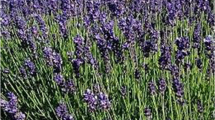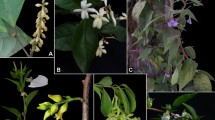Abstract
Flavonoids have been demonstrated to exhibit a wide range of biological activities including anti-inflammatory and neuroprotective actions. Although a significant amount of flavonoids has been identified to be present as glycosides in medicinal plants, determinations of the biological activities of flavonoids were mainly carried out with aglycones of flavonoids. Therefore, the exact role of the glycosidation of flavonoid aglycones needs to be established. In an attempt to understand the possible role of glycosidation on the modulation of the biological activities of flavonoids, diverse glycosides of kaempferol, quercetin, and aromadendrin were examined in terms of their anti-inflammatory activity determined with the suppression of lipopolysaccharide (LPS)-induced nitric oxide (NO) production in BV2 microglial cells. The results indicated that glycosidation of aglycones attenuated the suppressive activity of aglycones on LPS-induced NO production. Although attenuated, some of glycosides, depending on the position and degree of glycosidation, maintained the inhibitory capability of LPS-induced NO production. These findings suggest that glycosidation of flavonoid aglycones should be considered as an important modulator of the biological activities of flavonoids.
Similar content being viewed by others
References
Aligiannis, N., Mitaku, S., Mitrocotsa, D., and Leclerc, S., Flavonoids as cycline-dependent kinase inhibitors: inhibition of cdc 25 phosphatase activity by flavonoids belonging to the quercetin and kaempferol series.Planta Med., 67, 468–470 (2001).
Arts, I. C., Sesink, A. L., Faassen-Peters, M., and Hollman, P. C., The type of sugar moiety is a major determinant of the small intestinal uptake and subsequent biliary excretion of dietary quercetin glycosides.Br. J. Nutr., 91, 841–847 (2004).
Avontuur, J. A., Boomsma, F., van den Meiracker, A. H., de Jong, F. H., and Bruining, H. A., Endothelin-1 and blood pressure after inhibition of nitric oxide synthesis in human septic shock.Circulation, 99, 271–275 (1999).
Bocchini, V., Mazzolla, R., Barluzzi, R., Blasi, E., Sick, P., and Kettenmann, H., An immortalized cell line expresses properties of activated microglial cells.J. Neurosci. Res., 31, 616–621 (1992).
Chang, B. S., Kwon, W. S., and Kim, C. M., The chemical structures and their antioxidant activity of the components isolated from the heartwood of Hemiptelea davidii.Kor. J. Pharmcogn., 35, 80–87 (2004).
Green, L. C., Wagner, D. A., Glogowski, J., Skipper, P. L., Wishnok, J. S., and Tannenbaum, S. R., Analysis of nitrate, nitrite, and [15N]nitrate in biological fluids.Anal. Biochem., 126, 131–138 (1982).
Gudej, J., Kaempferol and quercetin glycosides from Rubus idaeus L. leaves.Acta. Pol. Pharm., 60, 313–315 (2003).
Ha, H. J., Kwon, Y. S., Park, S. M., Shin, T., Park, J. H., Kim, H. C., Kwon, M. S., and Wie, M. B., Quercetin attenuates oxygen-glucose deprivation- and excitotoxin-induced neurotoxicity in primary cortical cell cultures.Biol. Pharm. Bull., 26, 544–546 (2003).
Havsteen, B., Flavonoids, a class of natural products of high pharmacological potency.Biochem. Pharmacol., 32, 1141–1148 (1983).
Hou, L., Zhou, B., Yang, L., and Liu, Z. L., Inhibition of free radical initiated peroxidation of human erythrocyte ghosts by flavonols and their glycosides.Org. Biomol. Chem., 2, 1419–1423 (2004).
Hwang, B. Y., Kim, H. S., Lee, J. H., Hong, Y. S., Ro, J. S., Lee, K. S., and Lee, J. J., Antioxidant benzoylated flavan-3-ol glycoside from Celastrus orbiculatus.J. Nat. Prod., 64, 82–84 (2001).
Kim, H., Kim, Y. S., Kim, S. Y., and Suk, K., The plant flavonoid wogonin suppresses death of activated C6 rat glial cells by inhibiting nitric oxide production.Neurosci. Lett., 309, 67–71. (2001).
Kim, H. K., Cheon, B. S., Kim, Y. H., Kim, S. Y., and Kim, H. P., Effects of naturally occurring flavonoids on nitric oxide production in the macrophage cell line RAW 264.7 and their structure-activity relationships.Biochem. Pharmacol., 58, 759–765 (1999).
Kim, S. S., Kong, P. J., Kim, B. S., Sheen, D. H., Nam, S. Y., and Chun, W., Inhibitory action of minocycline on lipopolysaccharide-induced release of nitric oxide and prostaglandin E2 in BV2 microglial cells.Arch. Pharm. Res., 27, 314–318 (2004).
Liu, B., Gao, H. M., Wang, J. Y., Jeohn, G. H., Cooper, C. L., and Hong, J. S., Role of nitric oxide in inflammation-mediated neurodegeneration.Ann. N. Y. Acad. Sci., 962, 318–331 (2002).
Markham, K. R., Geiger, H., and Jaggy, H., Kaempferol-3-O- glucosyl(1-2)rhamnoside from Ginkgo biloba and a reappraisal of other gluco(1-2, 1-3, and 1-4)rhamnoside structures.Phytochemistry, 31, 1009–1011. (1992).
Masuoka, C., Ono, M., Ito, Y., Okawa, M., and Nohara, T., New megastigmane glycoside and aromadendrane derivative from the aerial part of Piper elongatum.Chem. Pharm. Bull. (Tokyo), 50, 1413–1415 (2002).
Murphy, M. P., Nitric oxide and cell death.Biochim. Biophys. Acta, 1411, 401–414 (1999).
Nemeth, K., Plumb, G. W., Berrin, J. G., Juge, N., Jacob, R., Nairn, H. Y., Williamson, G., Swallow, D. M., and Kroon P. A., Deglycosylation by small intestinal epithelial cell beta-glucosidases is a critical step in the absorption and metabolism of dietary flavonoid glycosides in humans.Eur. J. Nutr., 42, 29–42 (2003).
Wattel, A., Kamel, S., Mentaverri, R., Lorget, F., Prouillet, C., Petit, J. P., Fardelonne, P., and Brazier, M., Potent inhibitory effect of naturally occurring flavonoids quercetin and kaempferol onin vitro osteoclastic bone resorption.Biochem. Pharmacol., 65, 35–42 (2003).
Won, H. M., Kwon, W. S., Lee, J. H., and Kim, C. M., Chemical constituents of the leaves of Weigela subsessillis.Kor. J. Pharmcogn., 35, 1–5 (2004).
Author information
Authors and Affiliations
Corresponding author
Rights and permissions
About this article
Cite this article
Kwon, Y.S., Kim, SS., Sohn, S.J. et al. Modulation of suppressive activity of lipopolysaccharide-induced nitric oxide production by glycosidation of flavonoids. Arch Pharm Res 27, 751–756 (2004). https://doi.org/10.1007/BF02980144
Received:
Issue Date:
DOI: https://doi.org/10.1007/BF02980144




